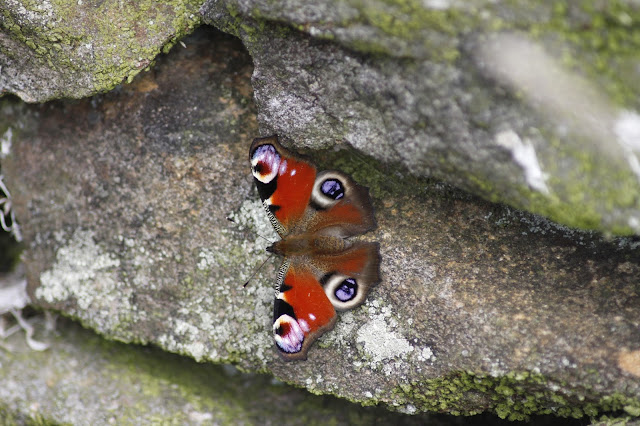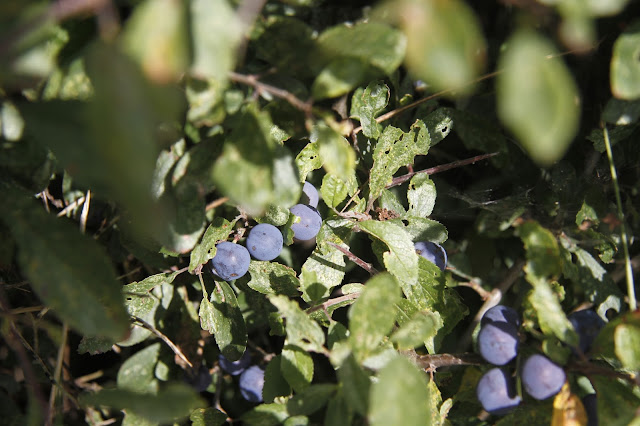Silsden -- A Nature Journal
September 2015
Common field grasshoppers have a large number of colour variations to blend in with almost any background except perhaps the black paint on this seat. Grasshoppers live for a few summer months on grass but die as the cold weather arrives in autumn.
Although mushrooms grow throughout the year, they are particularly associated with autumn. Fly agaric, which is commonly found with silver birch trees, is poisonous.
If this is brown roll-rim, which grows by paths in deciduous woodland, especially with birch, and on acid heathland, it is poisonous.
Not sure of the name of these mushrooms growing in a clump on a road-side ash tree.
Not sure of the name of these mushrooms growing in a clump on a road-side ash tree.
Teasels are uncommon in this area. The conical heads are attractive to bees when in flower in summer and to birds who feed on the seeds in winter. The prickly bracts and heads traditionally have been used in the textile industry to raise the nap on woollen cloths.
The seed heads are particularly popular with goldfinches.
The seed capsules of poppies are another wonder of autum. Seeds are dispersed through the pores at the top of the capsule when the stems are shaken by the wind.
Urgent web repairs await this spider.
Disturbed by movement, the spider, which has a sword-like white marking on its back, has quit the web for the safety of a thistle head.
There are 275 species of bee in Britain and Ireland. Apart from the honeybee and 25 different bumblebees, the rest are solitary, such as this one feeding on thistles. Picture by Beth Liddle Photography.
The UK has 46 species of ladybird. The vivid black, yellow and red colours are a keep-off warning to predators but do not deter the invasive and cannibalistic harlequin ladybird, which arrived in the south in 2004 and has become a serious threat to resident species. Picture by Beth Liddle Photography.
Despite its name, the 24-spot ladybird actually has between 16 and 20 blotches on its wing cases. Picture by Beth Liddle Photography.
The UK has 46 species of ladybird. The vivid black, yellow and red colours are a keep-off warning to predators but do not deter the invasive and cannibalistic harlequin ladybird, which arrived in the south in 2004 and has become a serious threat to resident species. Picture by Beth Liddle Photography.
Despite its name, the 24-spot ladybird actually has between 16 and 20 blotches on its wing cases. Picture by Beth Liddle Photography.
Butterflies have been in short supply this summer so it was remarkable to see four of the aristocrats basking on a short stretch of moorland wall warmed by the sun. Unable to survive the British winter, red admirals migrate here from southern Europe or North Africa each year.
The same red admiral feeds on a white buddleia. Several buddleias, a favourite source of nectar, grow alongside the walled track where the butterflies in this series had settled.
The small tortoiseshell has suffered a drastic decline in numbers. Like the peacocks, small tortoiseshells live through the winter as butterflies, sometimes in houses or garages and garden sheds.
The peacock has the largest false eyes of any British butterfly. The aristocrat butterflies were so named for their size and striking colours.
The painted lady is reputedly our farthest-travelled visitor, arriving after several breeding cycles from the Sahara. It cannot survive the British winter and the generation on the wing in September and October will die when the weather turns cold.
There has been a dearth of ladybirds as well as butterflies. This seven-spot ladybird was on the same track where the butterflies were on the wing.
The sun illuminates the handsome head colouring of a mallard drake.
This young swan spent ages foraging on the canal bank rather than probing beneath the water.
The same red admiral feeds on a white buddleia. Several buddleias, a favourite source of nectar, grow alongside the walled track where the butterflies in this series had settled.
The small tortoiseshell has suffered a drastic decline in numbers. Like the peacocks, small tortoiseshells live through the winter as butterflies, sometimes in houses or garages and garden sheds.
The peacock has the largest false eyes of any British butterfly. The aristocrat butterflies were so named for their size and striking colours.
The painted lady is reputedly our farthest-travelled visitor, arriving after several breeding cycles from the Sahara. It cannot survive the British winter and the generation on the wing in September and October will die when the weather turns cold.
There has been a dearth of ladybirds as well as butterflies. This seven-spot ladybird was on the same track where the butterflies were on the wing.
The sun illuminates the handsome head colouring of a mallard drake.
This young swan spent ages foraging on the canal bank rather than probing beneath the water.
The first blackthorn fruits, called sloes, are forming in hedgerows. Sloes can be made into jam and wine, popularly known as sloe gin.
Cardoons, or globe artichokes, a cultivated perennial plant, is attractive to bees and butterflies.
Cardoons, or globe artichokes, a cultivated perennial plant, is attractive to bees and butterflies.
Another attractive plant for pollinators is achillea both as a cultivated perennial (above) and growing wild, when it is known as yarrow, which is white, or, less commonly, as woundwort.
Subscribe to:
Comments (Atom)








































